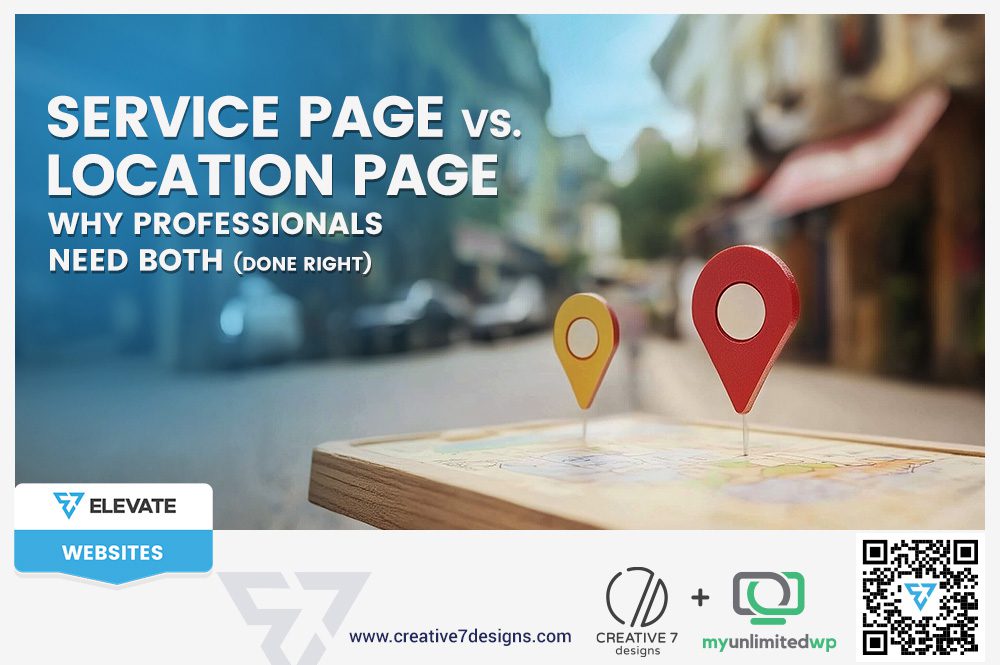Overview: Discover why service and location pages serve distinct purposes — and how both boost SEO, attract the right clients, and drive conversions when done right. Read more!
If you’re a service-based professional — whether you’re a lawyer, contractor, or consultant — you’ve likely put time into building your website. But here’s a key question: Are you using both service and location pages effectively?
These two page types serve different roles, and when optimized correctly, they work together to drive visibility, build trust, and turn browsers into buyers. Let’s break down the difference — and why you need both.
What’s the Difference Between Service Pages & Location Pages?
Service Pages: These pages showcase what you do. Each core service you offer — like “Family Law,” “Roof Repair,” or “Business Consulting” — deserves its own page. The goal? Help visitors understand your expertise and make it easy for search engines to match your content with relevant searches.
>> Related Reading: What Are SEO Service Pages & Why Are They Important for SEO?
Location Pages: These pages highlight where you do it. Whether you serve multiple cities, counties, or neighborhoods, each area should have a dedicated page. A location page builds trust with local audiences and helps you rank in geographically specific searches like “accountant in Austin” or “plumber near Scottsdale.”
>> Learn Are Location Pages Still Important for Local SEO?
Why You Need Both
Better SEO Reach: Google rewards relevance. Service pages target what users need. Location pages target where they need it. By covering both angles, you increase your visibility in both service-related and geo-targeted searches.
Stronger User Experience: A visitor looking for “web design in Tampa” wants to land on a page that speaks to both the service and the area. Having distinct pages keeps things focused, relevant, and clear — no scrolling through a vague, catch-all page.
Higher Conversion Rates: Specificity builds trust. When users see that you serve their area and offer their needed service, they’re more likely to reach out. Generic content doesn’t convert — tailored content does.
Common Mistakes to Avoid
Combining Everything on One Page: Trying to talk about all your services and locations on one page confuses visitors and tanks your SEO.
Duplicate Content Across Locations: Each location page should be unique — not just a copy-paste with a city name change.
Neglecting CTAs: Don’t forget to guide your reader. Each page should have a clear, compelling call to action.
Final Thoughts
Your website shouldn’t just exist — it should perform. That means creating a smart, structured experience that aligns with how people search and make decisions. Service pages tell them what you do best. Location pages tell them where you do it. Together, they work as a powerful duo that turns clicks into clients.
Need help structuring your service and location pages the right way? Let’s get your website working smarter — starting today.


